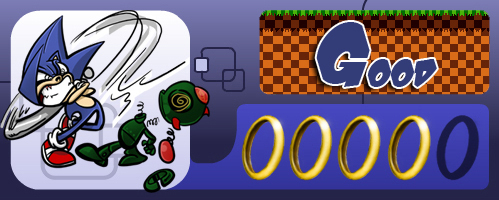Shadow Man was a near perfect super hero game. Its combination of non-linear level design and fluid action made for an immersive and empowering experience. Some twenty years later, it’s still a nearly perfect super hero game – the key word being nearly. Despite some welcome updates, Shadow Man: Remastered is still very much Shadow Man from 1999. It’s an engrossing, haunting, and deeply satisfying metroidvania that, in many ways, has aged remarkably well. The additions found in Shadow Man: Remastered allow longtime fans to experience this remarkable adventure anew, though if you didn’t like the original, this new edition likely won’t change your mind.
Bearer of the Mask of Shadows, Michael LeRoi has been gifted with the ability to walk between Liveside and Deadside – the lands of the living and the dead, respectively. He is known as the Shadow Man, voodoo warrior and the Lord of Deadside. Together with priestess Mamma Nettie, LeRoi oversees the balance between worlds, settling disputes with his awesome array of shadow powers.
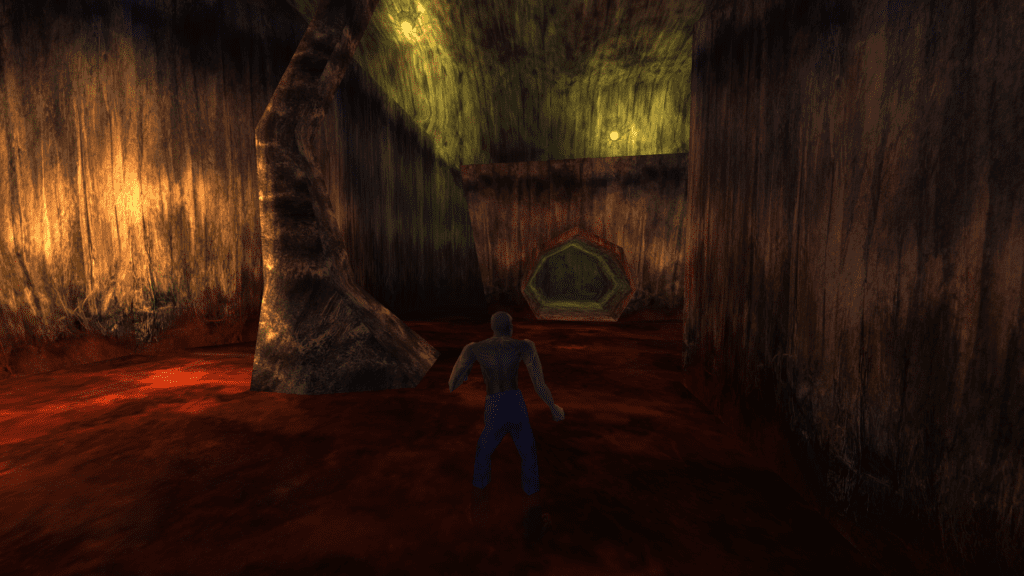
A mysterious man known as Legion is looking for architects (of a sort). Recruiting some of the most notorious killers in history, Legion has discovered a way to keep the gateway between Liveside and Deadside open, and (obviously) plans on using it for no good. In order to stop Legion, Shadow Man must race to find artifacts known as Dark Souls, amplifying his powers to beat the planes-walking no-gooders at their own game.
An explanation of what a Shadow Man is, when LeRoi adopted the role, and who the key players are in this ethereal chess match are largely breezed over in-game. Banter is snappy and to the point, but also full of character. It’s comic book writing at its best, conveying as much information in as little time as possible. The story isn’t hard to follow by any means, though fans of the comic are likely to get settled in a bit quicker than those new to universe, as this is not an origin story.
You ain’t felt nothing yet, Shadow Man
Liveside is, unsurprisingly, modeled after the real world. The bulk of your time, however, will be spent in Deadside. Deadside, even in its original iteration, was a marvel to behold, and this remastered release only amplifies its nightmarish beauty. A mix of gothic and industrial architecture peppered with African influences, its labyrinthine halls are fascinating as they are terrifying to behold. Purple and black clouds fly overhead, giving the impression of an ever-omnipresent storm on the horizon. From the massive courtyard of the Asylum to the tight confines of the Playrooms, Deadside looks and feels like a nightmare in the best way possible.
The remastered release’s high-resolution textures, 4K display, and ambient occlusion make the game – in spite of its original polygonal constructions – look absolutely stunning. The updated shadows and lighting go an especially long way in adding to the drama, making the game far more freighting than the original. While Shadow Man was a spooky game, the original wasn’t exactly an edge of your seat thriller. Dropping into Deadside for the first time in Shadow Man: Remastered, I was truly scared as the zombies wailed towards me, shadows flowing over their elongated skeletal limbs. It’s a testament to the original’s character and level designs that some twenty years later they remain so awe-inspiring.
On that note, several new and unused enemy and weapon models have been added to this updated release, though it’s important to note that the game is a remaster and not a remake, and the benefits of lighting and texture upgrades are contrasted against the dated polygonal constructions. Some awkward bits, like clipping with LeRoi’s shirt, are now all the more evident, though as a whole the game undoubtedly looks much better.
Tim Haywood’s music, which plays throughout most of the game, is simply beautiful. Like the visuals, the music is an awesome mix of genres and styles. Creepy synth melodies laced with African chants and percussion seamlessly transition between upbeat and atmospheric. It’s the type of music worth listening to outside of the game itself. Creature and weapon sound effects too are spectacular; The Shadow Gun’s shots (a mix of vulture screeching, thunder claps, human moaning, and a baby’s cry) being a particularly good example, shaping Deadside into a truly alien place.
The voice acting (unchanged from the original) is fantastic. Nettie’s snappy and confident personality is conveyed perfectly by voice acting veteran and Dreamcast alumni Lani Minella (who also played Rouge the Bat in Sonic Adventure 2 and the entire female cast of Illbleed, among others), while Jaunty’s sarcastic sense of humor is doled out by Barry Meade. Renowned voiceover artist Redd Pepper plays the part of LeRoi. He is to Shadow Man what Conroy is to Batman, and it’s near impossible to imagine anyone else filling the role. His poetic introductions to each area are a highlight, though bits like his howls of strength when he opens a Coffin Gate with, “I am the Lord of Deadside!” build LeRoi into a strong and likable avatar. Despite his gaunt build, Pepper gifts LeRoi with masculinity, intelligence, and humanity. It’s the caliber of voice acting that wouldn’t be commonplace for generations to come, and still stands out both among the Dreamcast library and contemporary fare.
“Weapon in my hand. My hand the arcing deathblow at the End of All Things. The horror. The horror. I embrace it.”
Shadow Man could be best be described as a third-person action-adventure, closer resembling metroidvania fare than survival horror. Shadow Man: Remastered incorporates a new dual analog control scheme, though you can reconfigure it as desired. Playing on an Xbox One controller, the triggers are reserved for weapons, with Michael able to dual wield should players wish. Y is for drawing/holstering your weapon(s) or interacting with switches/points in the environment. X brings up the weapon wheel, A jumps, and B causes Shadow Man to crouch or roll. Mobility in combat is key, as you’ll often be swarmed, forced to fight in tight confines, or both. Strafing in and out of cover and timing your rolls will help lessen the damage, and are essential to ensure your prolonged survival.
The dual analogue support, though a welcome update, isn’t as smooth as it could’ve been. Coupled with a slight aim-assist, combat does feel better Shadow Man: Remastered. That said, if you are accustomed to the old single analog controls, you’d be just as good sticking with that layout. The new dual analogue scheme does not allow you to look up or down, instead only serving to make strafing slightly less cumbersome. You can click the right stick to enter a first-person mode for precision aiming or looking around, though you’ll only use this feature on a handful of occasions.
A series of dials located in the lower right corner of the screen displays LeRoi’s stats. Ammunition for his Deadside weapons, and small dial showing his Shadow Gun charge (and Shadow level), are displayed in the inner dials, while his health is displayed on the other dial. If you kill enemies with your Shadow Gun (which has unlimited ammunition and can use both charged shots and semi-automatic fire), enemies will drop Lifeforce (health). If using voodoo weapons or firearms, which are more powerful but depend on finite ammunition, enemies will not drop Lifeforce when killed. There are ample stocks of ammo and Lifeforce scattered throughout each level, hidden in crates and jars, and these stocks will resupply when you move in and out of areas.
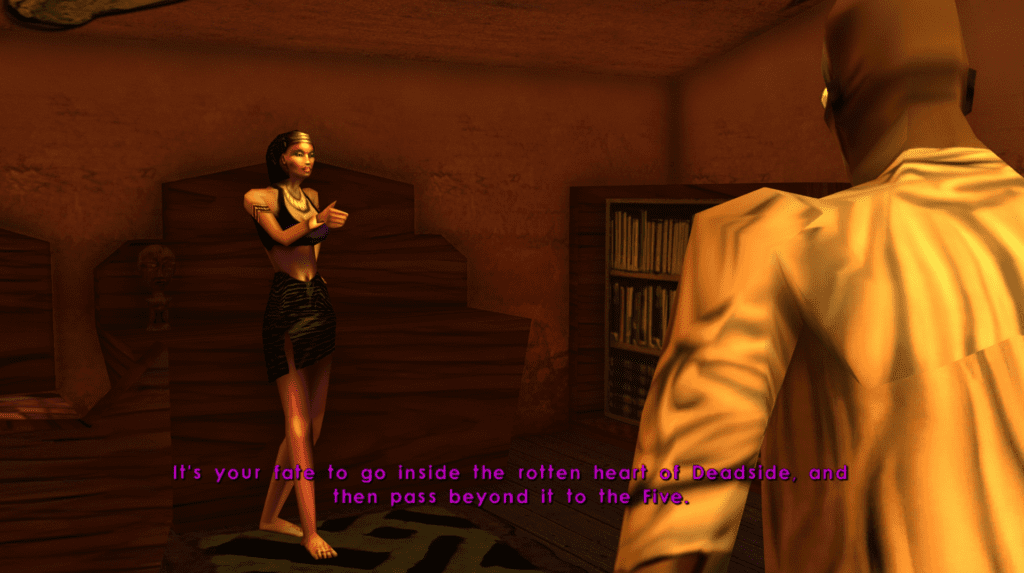
While combat has had a number of tweaks, the base platforming is unchanged. LeRoi will automatically latch onto ledges he jumps at. Pressing A when shimmying along a ledge, Shadow Man will plant his feet against the wall and jump off backwards. It’s different, for sure. I accidentally leapt backwards off ledges on more than one occasion simply because my muscle memory from other adventure games dictated I press the action button to climb up. After frying Shadow Man on molten lava a dozen times I finally got used to it. That said, the platforming in Shadow Man: Remastered can be downright sadistic. I found myself missing jumps constantly, trying to readjust my trajectory only to have Shadow Man awkwardly strafe-jump to the side – a problem I don’t remember having in the original. Control sensitivity aside, many of the gaps require perfect timing in order to launch off at the right point. This isn’t Uncharted, where you just magnetize to ledges the game deems within reach. Many a time I hurled Shadow Man forward, unsure whether he would attach to a ledge or drop like a rock. It takes a lot of practice to measure these gaps effectively, and with the slippery movement, missing a jump may not necessarily mean it is out of reach, but rather that you just need to work on your timing.
Swimming too can take some getting used to. There are enemies in some pools, and death underwater is usually a result of getting nibbled by gators more than it is wrestling with the controls, though you will initially have to be careful of LeRoi holding his breath for too long in Liveside. Shadow Man: Remastered is old school and adheres to strict rules, and while I don’t have a problem with these stringent rules, it was a shock to the system to play an adventure so willing to hurl me off a cliff or drown me with no regard for automatic checkpoints. However, with the quick-save system, you only need die and restart as often as you record your progress before one of these precarious sections.
Between the swirling spires, weaves of bridges, and numerous hidden passageways, navigation in Shadow Man: Remastered can prove daunting. Luckily, saving is permitted at any point, making finding your way around slightly less trying than other metroidvanias. That said, you’ll not doubt find yourself lost or struggling to recall where certain areas are thanks to the sheer size and complexity of the levels. Keeping notes while playing is highly recommended.
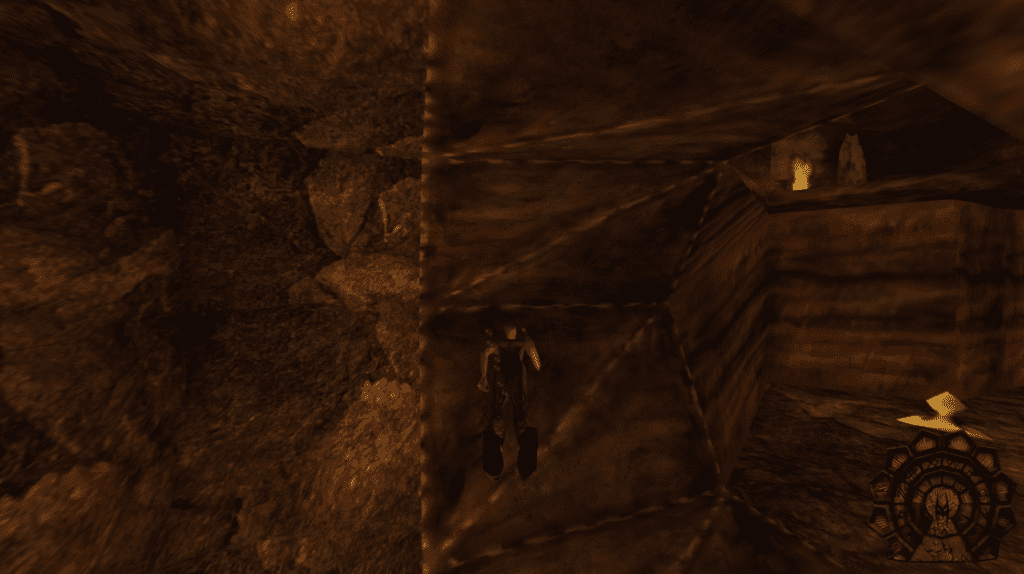
Collecting Dark Souls way before it was mainstream
In each area, Shadow Man is tasked with collecting Cadeaux and Dark Souls. After collecting 100 Cadeaux, players can exchange them at the Temple of Life for a boost to maximum health. Dark Souls, however, are the meat of progress. Collecting them will increase LeRoi’s shadow level, allowing him to open higher level Coffin Gates and boost the power of his Shadow Gun. Coffin Gates sometimes lead to new areas and sometimes house artifacts needed for progression (like the Poigne, which grants Shadow Man the ability to climb bloodfalls), allowing you to re-explore areas previously out of reach. Shadow Man: Remastered is non-linear, and though many doors and gates are blocked at first, you are free to search areas at your leisure until you have collected enough Dark Souls to move on.
Shadow Man cannot die in the traditional sense. Death merely results in a respawn back at the area’s start if in Deadside, or a transfer to Deadside if killed in Liveside (as well as possibly having enemies respawn.) Alternatively, LeRoi can use a teddy bear which belonged to his late brother, Luke, to travel between Liveside and Deadside at will. Though death can be a setback, it’s an interesting twist in that you never have to go back to the title screen or reload your game. This rhythm of continuity is great, feeling akin to modern fare like Dark Souls. Moreover, it communicates LeRoi’s powers to the player, showing that Shadow Man is eternal, but not invincible.
Shadow Man: Remastered contains several new levels which were cut from the original release. Though I certainly don’t have the original game memorized, I was thrown for a loop when encountering some of these areas in the updated release. Trying to find all the Dark Souls necessary to face Legion (or finding all of the Dark Souls in the game, at that), was a challenge in and of itself twenty years ago. Now, with this shuffling and addition of new areas, veterans have something to look forward to.
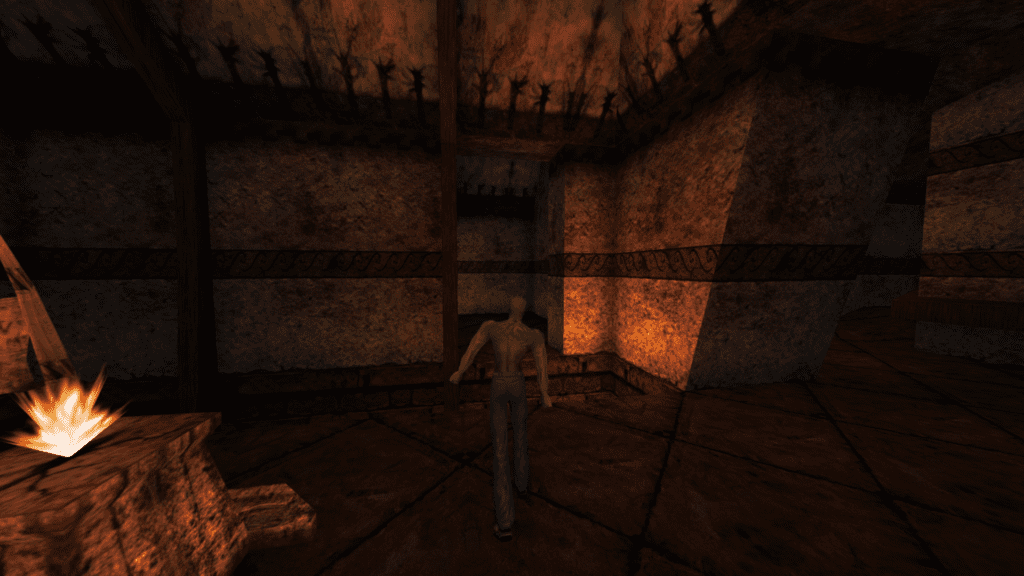
Though there is almost always something to do in Shadow Man: Remastered, there will likely come a point when you get stuck. Shadow Man: Remasterd‘s puzzles, like other metroidvanias, often come in the form of overloading players with pathfinding information, challenging them to recall where certain doors or obstacles are located. Figuring out how to activate certain areas, like the Cathedral of Pain, can be quite cryptic. A chat with Jaunty or Nettie may help push you in the right direction, though this isn’t the type of game you should feel ashamed about turning to a walkthrough for. While the game’s level circuits and art design are fantastic, they are also very disorienting.
Still the Lord of Deadside
At the end of the day, Shadow Man: Remastered is still Shadow Man from 1999. Much like the game’s hero, this game walks between realms. It’s got enough new to warrant longtime fans re-purchase it, but is also bogged down by many of its original (and a few new) imperfections. Despite the creepy atmosphere and occasional jump scare, Shadow Man: Remastered can be a surprisingly chill game to curl up with and just explore, and ultimately this high level of immersion is what kept me coming back. Whether you save Deadside and defeat Legion, or just spend a few hours playing voodoo warrior, Shadow Man: Remastered is an action-horror experience wholly worth (re)investigating.
